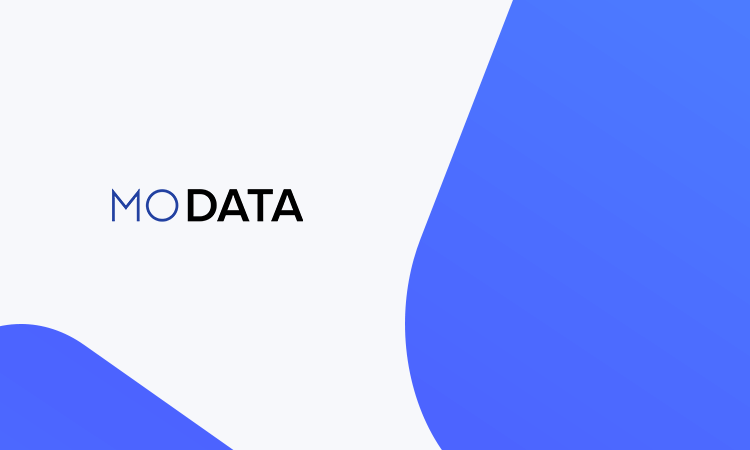
Effectively pricing your SaaS product is a constantly evolving strategy that requires fluidity, wit, and dedication. The impact can be unbelievable though, even going so far as single-handedly making, or breaking, your entire business. Pricing impacts the efficiency of your sales team, how the rest of the business world perceives you, and even influences the growth of your industry as a whole. “Set it and forget it” is not a term that applies here, so get ready to roll up your sleeves and dive into the pricing strategy guide you need to not just avoid getting crushed by your competition, but maximize your revenue potential sweep the market by storm.
Bottom Up Pricing
One strategy is to build your pricing structure from the ground up starting from the cost of service and then calculating what you need to hit revenue targets. This can be a good method to use when you are first starting out or don’t have a comparable price to benchmark against.
The cons of using a method such as this is that it removes the psychological aspect from your pricing strategy, which is an important element that must be considered before any kind of mature pricing strategy can be created.
Still, even though it’s basic, it’s worth exploring to get the gears turning in your head and ensuring you know what your minimum price must be to stay profitable.
Revenue Derived Pricing
Another strategy is to craft your pricing based on revenue per lead. A step up from the more basic method described above, this comes from multiplying your conversion rates against your price and then testing it across multiple prices to create a rainbow of various revenue per lead results. Doing this will give you some great insight into testing the waters of where you can set your price, as you can keep increasing the price until you start to see a drop in conversion rates and then comparing the end result efficiency of revenue per lead to guide your decision.
Price $ x Conversion Rate % = Revenue Per Lead (RPL)
After experimenting with different price points, you’ll end up with a spread of different results that give you some insight into the relationship between the price, conversion rate, and RPL.
- $1500/mo x 10% win rate = $150 RPL monthly or $1800 RPL annually
- $650/mo x 30% win rate = $195 RPL monthly or $2340 RPL annually
- $400/mo x 20% win rate = $80 RPL monthly or $960 RPL annually
While it’s not a perfect solution, it applies a formalized methodical process to exploring your pricing with results that are very reasonable to compare.
Comparison Benchmark Pricing
When it comes to the mechanics of building a pricing strategy, comparison against your competitors is one of the most powerful pieces of strategy that you have. Matching their price, going lower, going higher, or even going completely different – Whatever your strategy ends up being, your competitors pricing makes up the current market and anchors your potential buyer’s perspectives in one way or another.
After identifying your competitor’s pricing you can then move into how you want to position yourself against said competition. This is where the psychological strategy around pricing really come into play. There are various directions you can go, each with different risks, rewards, and communications to your buyers about your product.
Charging more than the competition can portray a sense of premium quality to potential buyers, with the downside being that they are likely to turn you down if their expectations of a higher quality are not fulfilled.
Charging less than your competition can portray a sense of bargain to potential buyers, however this always raises need for justification in their mind. Why are you priced lower? Is it because you are a lower quality? Smaller? People weren’t buying it at a higher price?
Taking these to extremes also give potential buyers completely different signals. Pricing a product much higher than the competition can give potential buyers a sense that you are actually not in the same category as competitors at all. While pricing a product much lower can give a sense that you are in extreme early stages looking more for feedback rather than an actual sale.
There is also the strategy of pricing yourself equally with competitors and then positioning yourself as providing an additional unique value for free. This can give potential buyers the perception that you intend to be directly compared to competitors with your eyes set on taking a share of the market. Potential buyers will likely have a greater confidence in your solution but will compare you more directly against your possibly more established competition, which is often the path with the highest amount of resistance even with a superior product due to market saturation.
Figuring out which of these, and the countless others not described, is best for your business will take a substantial amount of research. The significance however, is undeniable. Getting it right, or wrong, can truly make or break your business. Fortunately, making a change can provide results immediately, so constantly researching and monitoring your pricing will always provide you with insight that is immediately valuable.
Interviewing Potential Buyers
Another invaluable weapon at your disposal is the ability to interview potential buyers and gather their priceless feedback. The primary challenge here, is guiding potential buyers to give you information that is actually useful and that can be compiled into actionable insight.
The language you use when communicating this request plays a very significant role in how they will construct their feedback. Make sure to use explicit words such as “research” or “interview”, so that they understand there really is no strings attached in your approach. Often times people will make a request for “feedback” and then use it as an opportunity to sell. While this is tempting to do, if you want protect the integrity of your buyer’s pricing insight its important that you execute the opportunity exactly as you communicated to them ahead of time. Make it clear that you are in “learning mode” so that they feel free to give their opinion as honestly as possible.
Once you have their time, it comes to asking the right questions after a demo of your product. Ask them questions such as “How would you expect this product to be priced?” and “What do you think would be a fair price for this product?”. The first question of “how” is useful to prevent you from pricing your product in a confusing way. As an example, Salesforce is priced based on a “per seat” model. Your potential buyer may relate your product to Salesforce and explain that it should be priced in the same way. It may not even be a relation to a specific product that associate you with, it might just be a pricing structure they are familiar with. In either case, it’s an important insight to hear as choosing an easily understandable and familiar buying structure helps build confidence in buyers.
As for inquiring about what they think is a fair price, the purpose of this question is more straightforward but obviously must be considered with a grain of salt depending on your interviewee’s knowledge base of similar products. Even still, asking what they think is a fair price is a reliable way to ensure that you don’t accidently underprice your product. Most likely you’ll hear your answer in the form of a range, perhaps something like “somewhere between $12,000 to $18,000”, so make sure to pick their brain on how they came up with their range. Although this can be a great reference point, it’s important to note though that at the end of the day, nothing tells you what buyers will actually be willing to pay better actually asking them to do so.
Who Should Be Involved in SaaS Pricing Strategy?
Something that doesn’t get discussed very often is what teams should be involved in the engineering of the pricing model. As a typical process of evolution, the CEO is usually the first person to set an initial price during the extremely early stages of the growth. After that, it often becomes a bit of the wild west in terms of who controls the pricing. Sometimes the CEO may hold on to the responsibility of pricing for an extended period of time, sometimes finance will take over and set prices based on projections needed to hit numbers, and sometimes sales will take ownership due to their front line exposure in the trenches. Deciding which team is the most appropriate can be difficult to determine and may vary from business to business, however there are certain logical “best practices” that can be considered to help guide the evolution of this responsibility.
The first of these being the early removal of the CEO from the pricing structure. This is not because they don’t have a valuable opinion on the matter, but rather because the CEO is often the most passionate believer in the company. Because of this, they are often stricken with some level of bias around the value of the product or service. While this is a positive force in most situations (if your CEO doesn’t believe with all of their heart in business then you have a much bigger problem than pricing), when it comes to pricing this view of the value can overpower the data coming from the market and potential customers.
Interestingly, a better alternative that is often overlooked, is pricing strategy falling under the responsibility of the product team or the product marketing team. This works surprisingly well due to their superior knowledge of the marketplace and where new opportunities for growth may come to fruition, which houses its own ecosystem of unique competitors and buyers. Further, pricing strategy is one of the most impactful sales and marketing alignment mistakes you can and should avoid at all costs.
This is not to say that all of the responsibility should reside solely with the product team though. While it’s typically most effective to give them the final say, it’s beneficial to include other departments in regular discussion of pricing. Sales as an example, is obviously an essential fountain of insight into the frontlines of customer interaction. A great way to make sure you tap into the potential insights from each of these teams is to by creating a monthly discussion between the sales, marketing, finance, and product teams. Just be sure to have one team specifically designated to be the final decision makers or the overload of competing information will quickly dissolve into chaos.
Putting it all together
At the end of the day, there is no silver bullet for discovering where your pricing should be to maximize sales effectiveness. This is why great business leaders know the importance of developing it tirelessly and always allocating the proper resources needed to get the right strategy figured out. Ironically, finding the right pricing strategy always inevitably leads to itself becoming obsolete because its success causes your business to evolve, and as your business evolves, so must your pricing strategy. But the highest caliber of rewards always await businesses that can master catching the wind time and time again, so get out there and make it happen!




